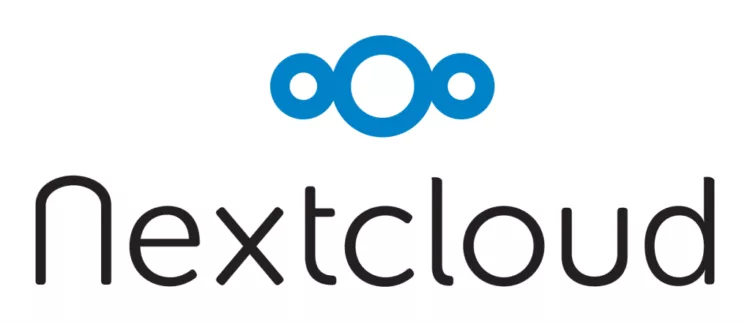Nextcloud vs Dropbox: Which Cloud Storage Solution Fits Your Needs?

Discover the key differences between Nextcloud and Dropbox. Compare privacy, collaboration tools, customization, and costs to choose the best cloud storage for you.
Nextcloud vs Dropbox: Choosing the Right Cloud Storage Solution
Cloud storage has become essential for managing both personal and professional data. As businesses and individuals increasingly shift away from local storage, selecting a cloud solution that strikes a balance between security, collaboration, scalability, and control is crucial. Nextcloud and Dropbox represent two contrasting models in the cloud storage ecosystem. While both offer robust file management capabilities, they cater to different user priorities and operational environments.
Understanding Nextcloud and Dropbox
Dropbox is a widely used cloud storage provider that delivers a centralized, subscription-based platform for file storage, sharing, and collaboration. It operates entirely in the cloud, requiring no server setup or maintenance from users. In contrast, Nextcloud is an open-source platform that allows individuals and organizations to host their private cloud infrastructure. Rather than relying on an external provider, Nextcloud users can manage their servers or opt for third-party hosting, thereby gaining more control over the environment. This fundamental difference shapes how each platform handles data, scalability, and customization.

Deployment Model and Ownership
Dropbox functions as a fully-managed SaaS (Software-as-a-Service), abstracting away infrastructure and backend complexity. Users sign up and immediately gain access to storage, collaboration tools, and integrations, without needing to handle technical configurations. However, this ease comes with limitations. Dropbox users must entrust all data to Dropbox’s servers, which may be located in various jurisdictions depending on the company’s infrastructure.
Nextcloud, on the other hand, requires a self-managed deployment or a hosted private instance. This grants full control over server location, data residency, and hardware configuration. Organizations with strict compliance needs or data sovereignty requirements benefit from this level of ownership. However, achieving these benefits depends heavily on choosing a reliable Nextcloud hosting provider, one that ensures security, performance, and minimal administrative burden.
Data Privacy and Security Features
Dropbox implements end-to-end encryption in transit and at rest but retains the ability to access user data for certain operational purposes. It offers two-factor authentication, file recovery, and administrative controls for business accounts. While these features meet the needs of most general users, they do not provide full data isolation or user-side encryption.
Nextcloud is built with privacy-first principles. It supports server-side encryption and can be configured for client-side encryption, ensuring that only users can decrypt their data. Administrators can define data retention rules, audit access logs, and enforce regional compliance, such as GDPR or HIPAA. This makes Nextcloud a stronger choice for users concerned with strict privacy, data governance, or regulatory obligations.

Collaboration and Productivity Tools
Dropbox includes productivity features like Dropbox Paper and integrates closely with tools like Microsoft 365 and Google Workspace. These integrations allow teams to co-edit documents, annotate files, and streamline workflows within a unified environment. Dropbox’s interface is optimized for ease of use and seamless collaboration across devices.
Nextcloud also offers collaborative tools, including Nextcloud Office (based on Collabora or OnlyOffice), real-time document editing, and communication via Nextcloud Talk. While functionally comparable, Nextcloud’s ecosystem is more modular, allowing users to choose and integrate only the tools they need. This flexibility benefits organizations with specific workflow requirements, but it may require more setup and technical expertise.
Customization and Extensibility
Dropbox maintains a uniform experience across its platform with limited customization options. While it offers third-party integrations through its App Center, users cannot alter the core functionality or interface. This consistency simplifies support and user training but limits adaptability.
Nextcloud provides extensive customization through its app store, with hundreds of extensions for calendaring, task management, file versioning, and security enhancements. Organizations can tailor the platform to match internal processes, branding, and IT policies. The open-source nature of Nextcloud further enables custom development, making it ideal for organizations with in-house technical capabilities or specialized needs.
Performance and User Experience
Dropbox is known for its high-performance sync engine, fast file access, and polished interface. It supports offline access, mobile productivity, and seamless synchronization across multiple devices. The platform’s intuitive design caters to non-technical users who prioritize simplicity and efficiency.
Nextcloud’s performance varies depending on the deployment environment. When properly configured, it offers comparable sync speed and accessibility. However, performance can be impacted by server resources, network setup, and storage configuration. While the interface is modern and functional, it may present a steeper learning curve, especially when leveraging advanced features or third-party apps.
Cost and Scalability Considerations
Dropbox employs a subscription pricing model, offering clearly defined plans for personal, business, and enterprise users. While this model ensures predictable costs and ongoing support, it may become expensive at scale, particularly for organizations with large storage requirements.
Nextcloud itself is free to use, but deploying it involves indirect costs such as server infrastructure, maintenance, and administrative resources. For smaller teams with technical expertise, self-hosting can be a cost-effective option. For enterprises, managed Nextcloud providers offer scalable solutions with support contracts, positioning Nextcloud as a flexible and potentially more affordable alternative in the long term.
Conclusion
Dropbox offers a polished, user-friendly experience with minimal setup, making it well-suited for individuals, teams, and businesses seeking a streamlined solution with integrated productivity tools. Its managed infrastructure and predictable pricing make it appealing for those prioritizing convenience and support.
Nextcloud excels in scenarios where privacy, customization, and control are paramount. It empowers organizations to define their own cloud environment and tailor functionality to specific operational demands. While it requires more involvement to set up and manage, the trade-off is unmatched flexibility and data sovereignty.
Choosing between Nextcloud and Dropbox ultimately depends on the user's priorities. For ease of use and ready-made collaboration, Dropbox delivers. For full control, enhanced privacy, and long-term adaptability, Nextcloud stands apart.
Is It Worth Paying $1.5k for a Domain for Personal Email?
Related articles:
